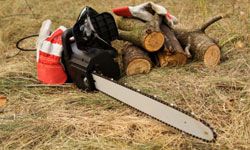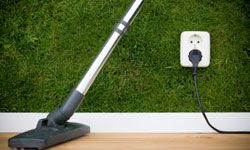Noisy, smelly and decidedly non-eco-friendly. Unfortunately, these words describe some of the power tools that make our chores a little easier but are also terrible noise and air polluters. There is hope, though. With so much attention on environmentally friendly products these days, it's no surprise that among the latest developments are green tools.
Some homeowners are opting for green tools to lower their electricity usage and stop stressing the power grid. Others vow to cut down on oil and gas in order to stop burning through energy resources. Still others just don't want to smell and breathe the nasty fumes that some tools produce.
Advertisement
In this article, we'll take a look at some popular green tools that rely on cleaner energy, making them easier on the ears, nose, environment and, occasionally, even the wallet.



